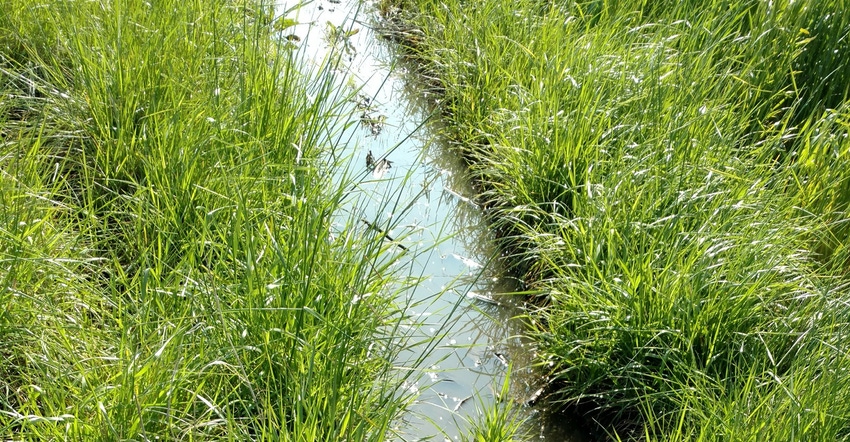
Many veterans of the annual Winter Wheat Quality Tour come into the event with a pretty good idea of what they will see. This year, not so much.
"We're really learning on the go here," said Jeannie Falk, Kansas State University Extension agronomist. "We don't really have the answers. We have never seen anything like this before. This is really a painful way to get an education."
What producers in western Kansas have seen — and tour participants got a taste of on the first day of the tour from Manhattan to Colby on Tuesday — is wheat that is in the boot stage to early heading that has been buried under several inches of snow for four days.
When they gathered with local farmers, agronomists and crop scouts in Colby to share first-day observations, most people had the same questions at the top of their mind: What should we expect? Is this the end? If the crop survives, what kind of harvest potential is there?
A vast area of Kansas’ wheat production — as much as 40% of the crop — has been affected by the freak winter storm that slammed western Kansas with plunging temperatures and rain, followed by heavy snow and high winds.
Falk urged producers to be "very patient" for the next couple of weeks, give the snow time to melt and then see how much nature can do to heal the physical damage and help the crop recover.
"I think writing it off is premature," she said. "There is some physical damage where stems are kinked or bent, most of them between the joints. There is a real chance that as it warms up and the wheat starts growing again, those stems will stand back up."
David Schemm, a Sharon Springs wheat producer who currently serves as president of the National Association of Wheat Growers, says he has grave doubts about the amount of recovery that can occur.
"There are two issues. First, the stem has been damaged. The veins that bring nutrients from the roots to the head are not intact. That will be a problem going forward. Even if the plant survives, I can't see how you get to optimum grain fill. Second, the growing point has been subjected to subfreezing temperatures, not just for a couple of hours, but for days. We've never seen that. We don't have any idea what is going to happen."
Lane County farmer Vance Ehmke said he put a thermometer in a field encrusted in ice. It read 30 degrees — a temperature that did not change over 48 hours.
"I just don't know. Is it even possible that the growing head, which was in the boot, can survive?" he asked.
Actually, it might be, said Romulo Lollato, Kansas State University Extension wheat specialist.
"All the data we have suggests that the crop can survive temperatures as low as the upper 20s for a few hours," he said. "What we have is a slighter higher temperature for a much longer time. We don't know. We’re going to find out."
The insurance issue
Schemm is also worried about crop insurance rules and deadlines as producers "wait patiently" to see what happens next.
"First, I wait for two weeks. And then I call my insurance agent and try to schedule an adjuster when literally every farmer in 30 or 40 counties is also calling. In the meantime, there's a critical deadline that I have to have the crop destroyed by if I want to declare that field summer fallow rather than continuous wheat. It looks to me like that deadline is going to pass while I am being patient."
The disaster of western Kansas aside, participants in the tour this year overall saw less potential in this year's crop than they did at the same time last year.
The Day 1 average calculated forecast for the state was 43 bushels, compared to a forecast of 47.1 bushels last year — a forecast that proved to be considerably below the actual harvest number, which topped 50 bushels to the acre after a May of near-perfect growing conditions.
In some ways, last year's crop has similarities to this year's. Both were planted in good moisture conditions in the fall over much of the state, although some later-planted fields were short of moisture, and stands were uneven.
Then came a very dry, warm winter that caused drought stress. It also provided good conditions for the survival of the wheat curl mite and the establishment of serious infections of wheat streak mosaic, especially in the western third of the state — the same area affected by the late blizzard.
The crop over much of the state also shows stress from barley yellow dwarf, and much of the central region was hit with freeze damage on April 23 and again on April 27.
What that all adds up to is a crop that even before one of the freakiest weather events in Kansas history had its challenges.
What it really comes down to, agronomists agreed, is how conditions unfold between now and harvest. Perfect growing conditions — cool temperatures and plenty of moisture (not a problem now for sure) —could help the crop make a recovery. A sudden turn to hot, dry, windy conditions could cause rapid maturity without much chance for healing.
"The next six to eight weeks are going to be interesting," Lolatto said.
About the Author(s)
You May Also Like




